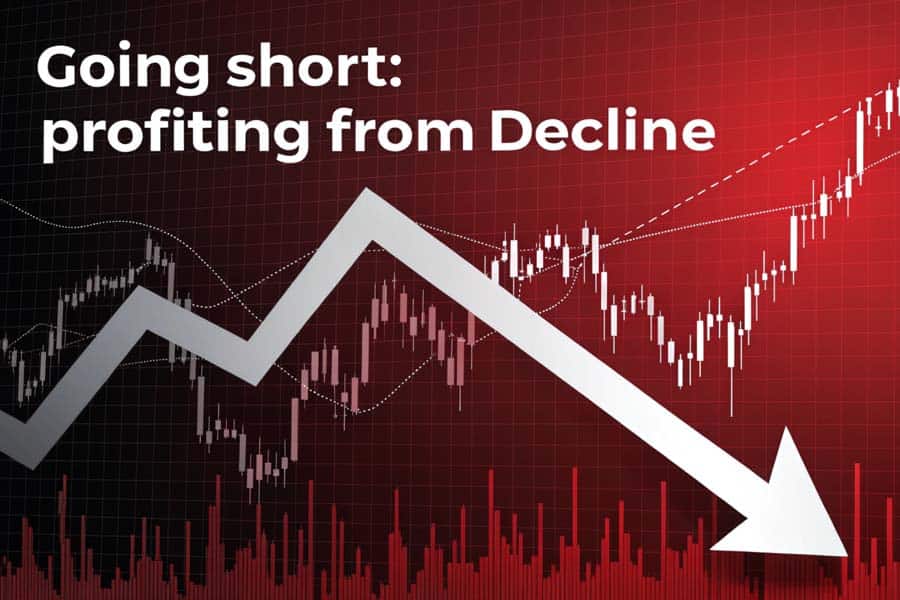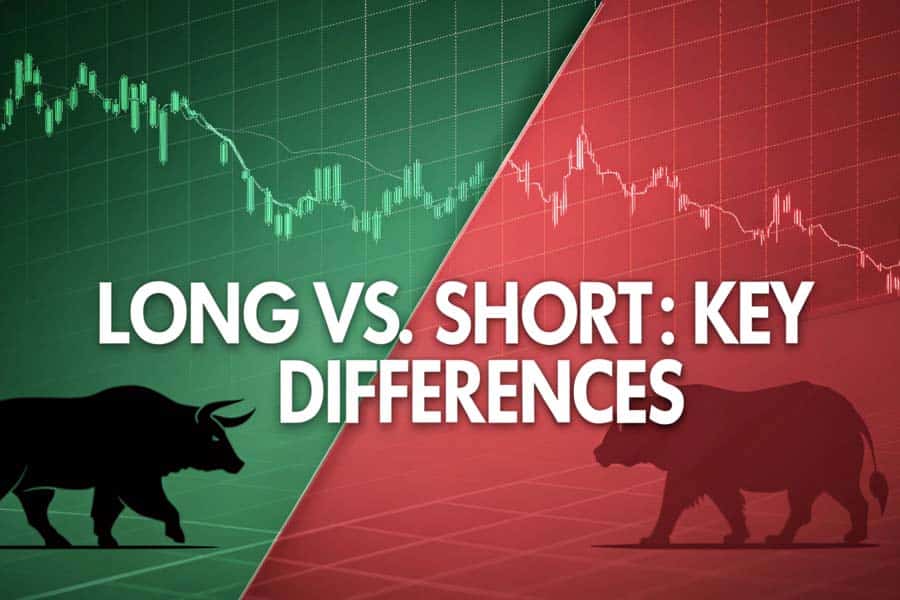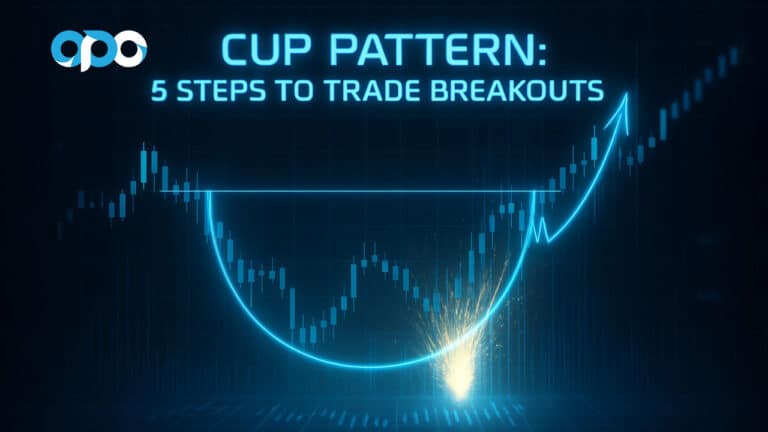Imagine navigating the vast and dynamic world of forex trading with the confidence to profit whether the market is climbing or plunging. Forex trading offers this unique opportunity, allowing traders to capitalize on currency movements across the globe. Central to this high-stakes environment are the concepts of long and short positions in forex trading. Whether you’re partnering with a regulated forex broker or utilizing the resources of an online forex broker, understanding the difference between long and short positions in forex is crucial for crafting successful trading strategies.

In the fast-paced realm of forex, every decision can lead to significant gains or losses. Grasping when to go long or short not only enhances your trading strategy but also empowers you to respond adeptly to market fluctuations. This comprehensive guide delves deep into the long and short positions in forex trading, unraveling their distinct characteristics, strategic applications, and the crucial factors that influence their effectiveness. By the end of this article, you’ll possess the insights needed to make informed trading decisions, optimize your strategies, and elevate your forex trading prowess.
According to recent statistics, over $6 trillion is traded daily in the forex market, making it the largest financial market globally. Understanding the difference between long and short positions in forex is essential to tapping into this lucrative market effectively.
What is a Long Position in Forex?
A long position in forex signifies buying a currency pair with the expectation that the base currency will appreciate against the quote currency. In essence, you’re betting on the currency’s strength to rise over time.

A long position reflects confidence in a currency’s upward trajectory.
Practical Insights
- Opening a Long Position: For instance, purchasing the EUR/USD pair implies that you anticipate the euro will strengthen against the US dollar. This action is taken when you believe the eurozone economy is robust or that favorable economic indicators will drive the euro’s value higher.
- Scenarios for Going Long: Traders typically opt for long positions during bullish market conditions or when technical indicators, such as moving averages or the Relative Strength Index (RSI), signal upward momentum. Positive geopolitical developments or strong economic data can also prompt a long position.
- Risks and Rewards: Long positions can yield substantial gains if the market moves in the predicted direction. However, they are susceptible to market reversals or bearish economic news, which can lead to significant losses if not managed properly.
Pro Tip: Always set a stop-loss order when going long to protect against unexpected market dips and to manage your risk effectively.
Understanding the Mechanics
When you take a long position, you’re effectively buying the base currency and selling the quote currency simultaneously. This position benefits from an increase in the base currency’s value relative to the quote currency. For example, in the EUR/USD pair, EUR is the base currency, and USD is the quote currency. If the EUR/USD moves from 1.1000 to 1.1200, the euro has strengthened against the dollar, resulting in a profit for the trader who went long.
Typical Scenarios
Long positions are often favored during periods of economic expansion, rising interest rates, or when a country’s political climate is stable and investor confidence is high. Traders might also take long positions in anticipation of positive news releases, such as strong employment figures or higher GDP growth rates, which can drive the currency’s value upward.
Expert Insight: Jane Doe, a seasoned forex trader, notes, “Taking long positions in times of economic growth can maximize profits as currencies tend to appreciate with strong economic indicators.”
Read More: Forex Terminology for Beginners
What is a Short Position in Forex?
Conversely, a short position in forex involves selling a currency pair with the expectation that the base currency will depreciate against the quote currency. Essentially, you’re betting on the currency’s weakness to decline in value.

Short positions capitalize on downward trends in currency markets.
Practical Insights
- Mechanics of Shorting: For example, if you believe the Japanese yen will weaken against the US dollar, you might sell the USD/JPY pair. As the dollar strengthens against the yen, the value of your short position increases, allowing you to buy back the pair at a lower price.
- Scenarios for Shorting: Traders often consider short positions during bearish market trends or when technical indicators suggest downward momentum. Negative economic news, political instability, or declining commodity prices can also be catalysts for shorting a currency.
- Risks and Rewards: Short positions offer opportunities to profit from declining markets, especially in volatile conditions. However, they carry higher risks, particularly during sharp market reversals or unexpected bullish news, which can lead to substantial losses if not managed with appropriate risk controls.
Pro Tip: Utilize trailing stop orders when shorting to lock in profits as the market moves in your favor and to protect against sudden reversals.
Understanding the Mechanics
Taking a short position means selling the base currency while simultaneously buying the quote currency. This position benefits from a decrease in the base currency’s value relative to the quote currency. For instance, in the GBP/JPY pair, GBP is the base currency, and JPY is the quote currency. If GBP/JPY moves from 150.00 to 148.00, the pound has weakened against the yen, resulting in a profit for the trader who went short.
Typical Scenarios
Short positions are commonly employed during economic downturns, declining interest rates, or when investor sentiment is pessimistic. Traders may also initiate short positions in response to negative news releases, such as weak employment data or falling GDP figures, which can drive the currency’s value downward.
Unique Insight: According to the Forex Market Report 2024, short positions saw a 15% increase during geopolitical tensions, highlighting their strategic importance in uncertain times.
Forex Long vs Short Positions: Key Differences
Understanding the key differences between long and short positions in forex is essential for developing effective trading strategies. These differences influence how traders approach the market, manage risk, and capitalize on opportunities.

Visualizing the fundamental differences between long and short forex positions.
1. Profit Objectives
- Long Position: The primary goal is to buy low and sell high. Traders aim to purchase a currency pair at a lower price and sell it at a higher price, profiting from the appreciation of the base currency.
- Short Position: The objective is to sell high and buy back low. Traders seek to sell a currency pair at a higher price and repurchase it at a lower price, profiting from the depreciation of the base currency.
2. Market Sentiment
- Long: Aligns with bullish sentiment, where traders anticipate upward trends and increased currency values.
- Short: Reflects bearish sentiment, where traders expect downward trends and decreased currency values.
3. Risk Management
- Long: Generally considered less volatile but can be susceptible to slow-moving markets or gradual declines.
- Short: Offers higher rewards in volatile markets but carries greater risk, especially during sharp reversals or unexpected bullish movements.
4. Execution
- Long: Involves buying a currency pair outright. This straightforward approach is often easier for beginners to understand and execute.
- Short: Entails selling or borrowing and selling a currency pair. This can be more complex, as it requires understanding margin requirements and the mechanics of short selling.
5. Psychological Approach
- Long Traders: Tend to exhibit patience and a positive outlook, focusing on growth and upward trends.
- Short Traders: Must maintain a cautious and strategic mindset, ready to act swiftly in response to market downturns.
Understanding these distinctions between long and short positions in forex is pivotal for tailoring your trading strategies effectively.
Read More: Forex Trading for Beginners
Understanding Long and Short Positions in Forex Trading
Mastering the long and short positions in forex trading is foundational for any successful trader. These positions form the basis of various trading strategies and can significantly impact your profitability and risk exposure.
1. Choosing Between Long and Short Positions in Forex
Deciding whether to take a long or short position involves analyzing multiple factors, including market trends, economic indicators, and personal risk tolerance. Here’s how to choose:
- Market Trend Analysis: Identify whether the market is trending upwards or downwards using tools like moving averages and trendlines.
- Economic Indicators: Monitor key indicators such as GDP growth, unemployment rates, and interest rates, which can influence currency values.
- Risk Assessment: Evaluate your risk appetite. Long positions might be less risky in stable markets, while short positions could offer higher returns in volatile conditions.
2. Strategies for Long and Short Positions in Forex Trading

Effective strategies for mastering long and short forex positions.
Implementing effective strategies can enhance your trading performance. Here are some strategies tailored for long and short positions:
- Trend Following Strategy: Align your positions with the prevailing market trend. Take long positions in a rising market and short positions in a falling market.
- Breakout Strategy: Enter a long position when the price breaks above a significant resistance level or a short position when it breaks below a support level.
- Range Trading Strategy: Identify price ranges where the currency pair is oscillating and take long positions near support and short positions near resistance.
3. Risk Management Techniques
Proper risk management is crucial when dealing with long and short positions to protect your capital and ensure long-term sustainability.
- Stop-Loss Orders: Set predefined exit points to limit potential losses.
- Position Sizing: Determine the appropriate size of each trade based on your overall portfolio and risk tolerance.
- Diversification: Spread your investments across different currency pairs to minimize exposure to any single market movement.
By integrating these strategies and risk management techniques, traders can effectively navigate the complexities of long and short positions in forex trading.
Factors Influencing the Choice Between Long and Short Positions
Selecting between a long or short position isn’t arbitrary; it depends on various factors that influence market dynamics and individual trading goals.
Market Analysis
Technical Indicators
Tools like moving averages, RSI (Relative Strength Index), and Bollinger Bands play a pivotal role in identifying trends and potential reversal points. For example, if the RSI indicates an overbought condition, it might signal a good time to consider a short position.
Fundamental Analysis
Economic indicators such as interest rates, GDP growth, employment data, and geopolitical events significantly impact currency values. Understanding these factors helps traders make informed decisions about taking long or short positions based on the underlying economic health of a currency’s issuing country.
Economic News
Examples
Announcements like Non-Farm Payroll (NFP) data, central bank interest rate decisions, and trade balance reports can drastically shift market sentiment. Positive NFP data may lead traders to take long positions on the affected currency, while disappointing economic news might prompt short positions.
Trader’s Risk Tolerance
Conservative vs. Aggressive Traders
- Conservative Traders: Often prefer long positions in stable markets, minimizing exposure to high-risk scenarios.
- Aggressive Traders: May thrive on the volatility of short positions, seeking higher returns despite the increased risk.
Market Trends
Momentum Indicators
Evaluating the strength and direction of price movements using momentum indicators helps traders decide whether to initiate a long or short position. For instance, strong upward momentum might encourage a long position, while weakening momentum could signal a short position.
By carefully analyzing these factors, traders can strategically choose between long and short positions to align with market conditions and their personal trading objectives.
Practical Examples
Real-world examples illustrate how long and short positions operate, highlighting their distinct applications and outcomes.
Long Position Example
- Pair: EUR/USD
- Entry Point: 1.1000
- Stop-Loss: 1.0950
- Take-Profit: 1.1100
- Scenario: A trader anticipates that the euro will strengthen against the US dollar due to positive economic data from the Eurozone.
Outcome: If the EUR/USD rises to 1.1100, the trader closes the position, realizing a profit of 100 pips. However, if the market reverses and drops to 1.0950, the stop-loss order limits the loss to 50 pips.
Short Position Example
- Pair: GBP/JPY
- Entry Point: 150.00
- Stop-Loss: 152.00
- Take-Profit: 147.00
- Scenario: A trader expects the British pound to weaken against the Japanese yen due to upcoming Brexit negotiations creating uncertainty.
Outcome: If GBP/JPY declines to 147.00, the trader closes the position, securing a profit of 300 pips. Conversely, if the market moves against the expectation and rises to 152.00, the stop-loss order caps the loss at 200 pips.
These examples underscore the importance of precise entry and exit points, as well as effective risk management strategies, in both long and short forex positions.
Comparison of Outcomes
Comparing the outcomes of the long EUR/USD position and the short GBP/JPY position reveals key differences:
- Profit Potential: The short position on GBP/JPY offers a higher profit potential due to larger pip movements, reflecting the volatility often present in cross-currency pairs.
- Risk Exposure: Both positions have defined risk limits through stop-loss orders, but the short position may involve greater risk due to the inherent volatility of certain currency pairs.
Understanding these differences helps traders tailor their strategies to their risk tolerance and market outlook.
Read More: Master 8 Different Types of Orders in Forex Trading
Tips for Beginners on Long and Short Positions
For those new to forex trading, mastering long and short positions in forex is foundational. Here are essential tips to help beginners navigate these concepts effectively.

Essential tips for beginners to navigate long and short positions in forex trading.
1. Practice with Demo Accounts
Before risking real money, utilize demo accounts offered by online forex brokers to practice placing long and short positions. This hands-on experience allows you to understand the mechanics without the emotional pressure of actual trading.
2. Manage Emotions
Emotional control is crucial in both bullish and bearish markets. Fear and greed can cloud judgment, leading to impulsive decisions. Develop a disciplined approach to stick to your trading plan and risk management strategies.
3. Invest in Education
Continuous learning is vital for success in forex trading. Explore educational resources, attend webinars, and read up on market analyses to deepen your understanding of long and short positions in forex.
4. Start Small
Begin with smaller positions to minimize risk while you’re still learning. As your confidence and expertise grow, you can gradually increase your trading size.
5. Develop a Trading Plan
A well-defined trading plan outlines your strategies, risk tolerance, and financial goals. It serves as a roadmap, helping you stay focused and make informed decisions.
6. Use Risk Management Tools
Incorporate tools like stop-loss and take-profit orders to protect your investments and manage potential losses effectively.
By adhering to these tips, beginners can build a solid foundation for successful forex trading.
Pro Tips for Advanced Traders
For those with experience in forex trading, refining your strategies with advanced techniques can significantly enhance your performance. Here are some pro tips to elevate your trading game.
1. Leverage Advanced Indicators
Combine multiple technical indicators, such as Bollinger Bands with RSI, to identify precise entry and exit points. This multi-indicator approach can provide a more comprehensive view of market conditions.
2. Hedge Positions
Implement hedging strategies by taking both long and short positions on correlated currency pairs. This can mitigate risk by offsetting potential losses in one position with gains in another.
3. Monitor Global News Closely
Stay updated on global economic events, geopolitical developments, and central bank announcements. Rapidly responding to news can provide a competitive edge in capturing profitable opportunities.
4. Optimize Leverage Use
Utilize leverage wisely to amplify profits while keeping risk exposure in check. Understanding the balance between leverage and margin is crucial to avoid significant losses.
5. Automate Trading Strategies
Use automated trading systems or algorithms to execute trades based on predefined criteria. Automation can enhance efficiency and eliminate emotional biases from trading decisions.
6. Analyze Market Sentiment
Gauge the overall market sentiment through tools like the Commitment of Traders (COT) report or sentiment indicators. Understanding whether the market is predominantly bullish or bearish can inform your trading strategies.
Incorporating these advanced strategies can help experienced traders maximize their profitability and manage risks more effectively.
Opofinance Services Section
Looking for a reliable and advanced forex trading broker? Opofinance, an ASIC-regulated forex broker, offers a secure and feature-rich platform tailored to meet the needs of both novice and seasoned traders. Here’s why Opofinance stands out:
- Social Trading Features: Copy the trades of experienced professionals and learn from their strategies, making it easier to achieve consistent results.
- MT5 Broker Listing: Benefit from the advanced capabilities of MetaTrader 5, including enhanced charting tools, faster execution, and a wider range of indicators.
- Safe Deposits and Withdrawals: Enjoy multiple secure payment methods, ensuring that your funds are handled safely and conveniently.
- Exclusive Trading Tools: Access proprietary tools and resources designed to give you a competitive edge in the forex market.
- 24/7 Customer Support: Receive round-the-clock assistance from a dedicated support team, ensuring that your trading experience is smooth and hassle-free.
- Social Trading Service: Engage in social trading by following and interacting with other traders, fostering a collaborative trading environment.

Start trading confidently today with Opofinance! Sign up now!
Conclusion
Mastering the difference between long and short positions in forex is fundamental to developing effective trading strategies and achieving success in the dynamic forex market. By understanding the distinct characteristics, risks, and rewards associated with each position, traders can make informed decisions that align with their financial goals and market outlook. Whether you’re taking a long position to capitalize on upward trends or a short position to profit from declines, the key lies in meticulous analysis, disciplined risk management, and continuous learning. Embrace these principles to navigate the complexities of forex trading with confidence and resilience.
In the ever-evolving forex landscape, staying informed and adaptable ensures that your trading strategies remain effective and profitable.
Key Takeaways
- Difference Between Long and Short Positions in Forex: Long positions involve buying a currency pair with the expectation of price increases, while short positions entail selling a currency pair anticipating price declines.
- Long and Short Positions in Forex Trading: Understanding these positions is essential for leveraging market movements to your advantage, whether the market is bullish or bearish.
- Key Influencers: Market analysis, economic news, risk tolerance, and prevailing market trends are critical in deciding between long and short positions.
- Advanced Strategies: Utilizing technical indicators, hedging, and staying informed on global events can enhance trading effectiveness and profitability.
- Risk Management: Implementing stop-loss orders and managing leverage are essential to mitigate potential losses and protect your investments.
- Unique Insights: Incorporating expert opinions and staying updated with the latest market trends can provide a competitive edge in forex trading.
By internalizing these key points, traders can enhance their strategic approach and improve their chances of success in forex trading.
What are the most common mistakes traders make when going long or short in forex?
One of the most prevalent mistakes is failing to use stop-loss orders, which can lead to significant losses if the market moves against the position. Additionally, trading without a clear plan or strategy often results in impulsive decisions driven by emotions rather than analysis. Overleveraging is another common error, where traders take on excessive risk without adequate capital to sustain potential losses. Finally, neglecting market research and not staying updated with economic news can cause traders to miss critical signals that influence currency movements.
Can you take both a long and a short position at the same time in forex?
Yes, taking both a long and a short position simultaneously is known as hedging. This strategy is used to mitigate risks by offsetting potential losses in one position with gains in another. For example, a trader might hold a long position in EUR/USD and a short position in GBP/USD to protect against adverse movements in either the euro or the pound. However, it’s essential to understand that while hedging can reduce risk, it also limits potential profits and may involve additional costs, such as increased margin requirements.
How do leverage and margin affect long and short forex positions?
Leverage allows traders to control larger positions with a smaller amount of capital, amplifying both potential profits and losses. When taking a long or short position, leverage can significantly enhance the returns if the market moves in the trader’s favor. However, it also increases the risk of substantial losses if the market moves against the position. Margin is the collateral required to maintain a leveraged position. It ensures that traders have sufficient funds to cover potential losses. High leverage can lead to margin calls, where traders must deposit additional funds or close positions to maintain their margin requirements. Proper management of leverage and understanding margin requirements are crucial for mitigating risks in both long and short positions.







